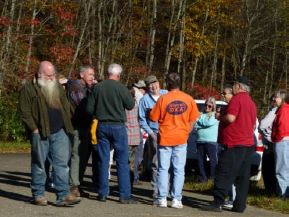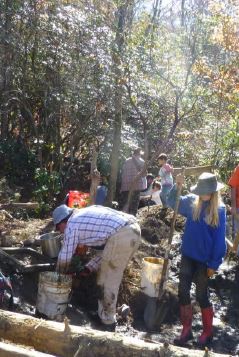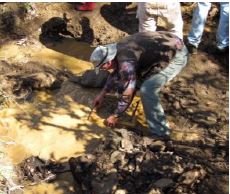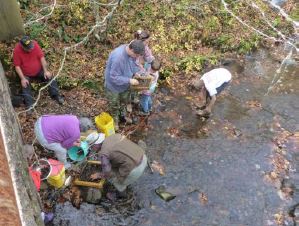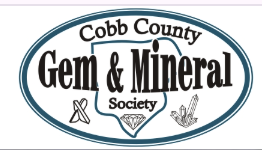Past Field Trips
Chunky Gal Field Trip
October 20, 2012
by Robie Hunt
It was a beautiful fall day for our field trip to the Chunky Gal area of North Carolina. The fall colors and vistas were amazing. We had 28 people who attended the trip, with people coming from an Alabama Club, a Mississippi Club, the Tri State Club, GMS and CCGMS! Trip leader Dion had quite a challenge keeping track of all the participants, but brought a whistle with him which you could hear throughout the mountain and kept people on track!
There was a wide variety of rocks and minerals to collect on this trip on the different terrains. There was smaragdite on Corundum Knob, sapphires and zoisite at Cat-eye Cut and garnets & corundum in Buck Creek. Members were also exposed to a lot of different collecting techniques from surface collecting to digging and sifting materials. It was a great trip for collecting and making new friends from other clubs.
The geology of Corundum Knob sounds more like science fiction than real science. About 300 million years ago the North American continent collided with the African continent along the southeastern margin of the USA. This collision caused a mountain building event, which is still preserved in the rock of the highly eroded Blue Ridge Mountains of northern GA and southern NC. Most of the ocean floor existing between the two converging continents was pushed under (subducted beneath) North American where it melted and produced volcanoes.
However, now for the weird part of the story, the very last pieces of ocean floor refused to go under North America and these got pushed up into the Blue Ridge Region like wood splinters in your finger when you rub it against an unfinished wood surface.
Corundum Knob is a piece of the mantle of the Earth lying on the top of a mountain. Usually when this happens the metamorphic water causes the peridot crystal to change into talc and serpentine, but here in N.C. the metamorphism was dry and the peridot changed into rubies, sapphires and smaragdite.
